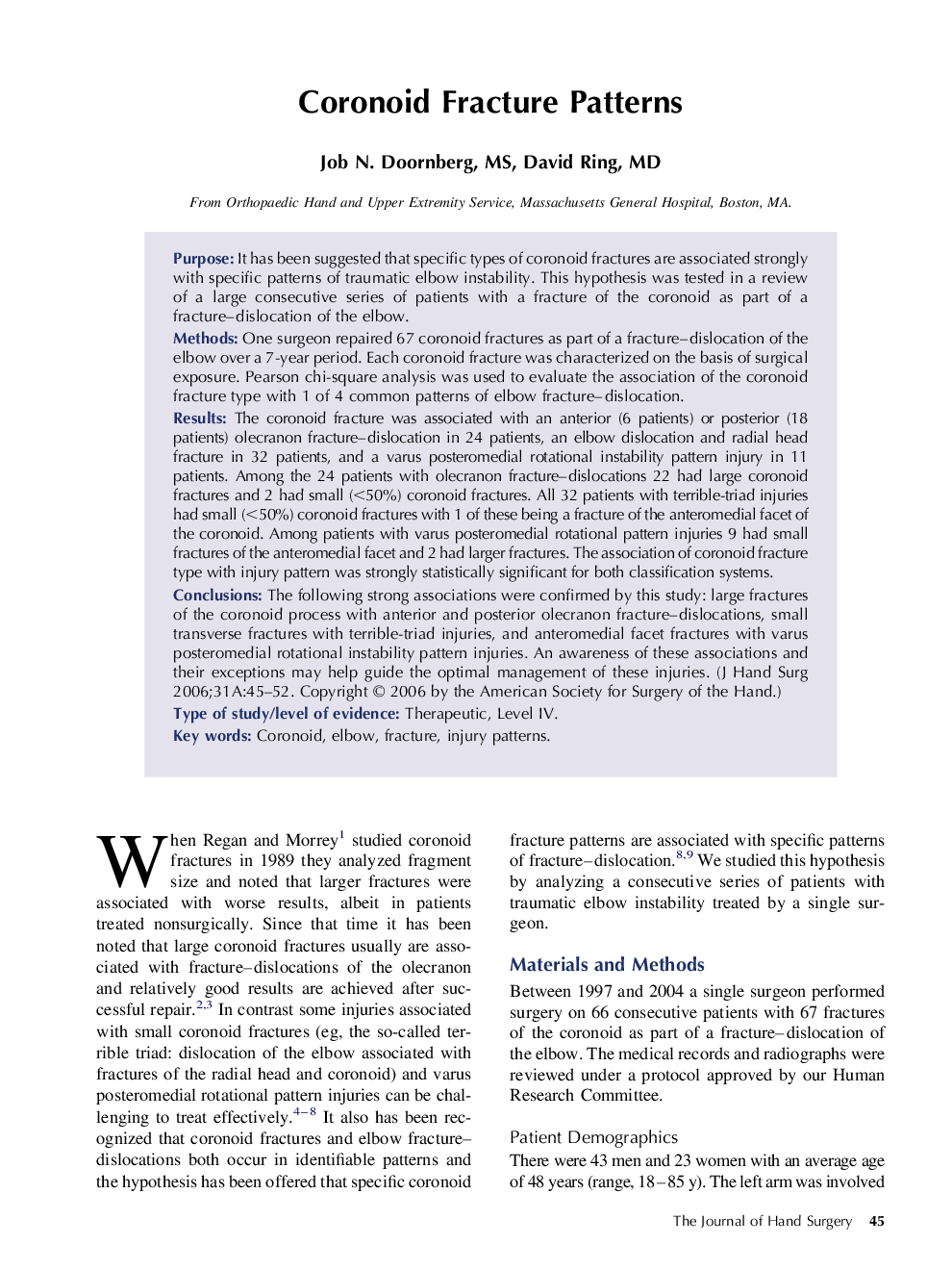| Article ID | Journal | Published Year | Pages | File Type |
|---|---|---|---|---|
| 4070994 | The Journal of Hand Surgery | 2006 | 8 Pages |
PurposeIt has been suggested that specific types of coronoid fractures are associated strongly with specific patterns of traumatic elbow instability. This hypothesis was tested in a review of a large consecutive series of patients with a fracture of the coronoid as part of a fracture–dislocation of the elbow.MethodsOne surgeon repaired 67 coronoid fractures as part of a fracture–dislocation of the elbow over a 7-year period. Each coronoid fracture was characterized on the basis of surgical exposure. Pearson chi-square analysis was used to evaluate the association of the coronoid fracture type with 1 of 4 common patterns of elbow fracture–dislocation.ResultsThe coronoid fracture was associated with an anterior (6 patients) or posterior (18 patients) olecranon fracture–dislocation in 24 patients, an elbow dislocation and radial head fracture in 32 patients, and a varus posteromedial rotational instability pattern injury in 11 patients. Among the 24 patients with olecranon fracture–dislocations 22 had large coronoid fractures and 2 had small (<50%) coronoid fractures. All 32 patients with terrible-triad injuries had small (<50%) coronoid fractures with 1 of these being a fracture of the anteromedial facet of the coronoid. Among patients with varus posteromedial rotational pattern injuries 9 had small fractures of the anteromedial facet and 2 had larger fractures. The association of coronoid fracture type with injury pattern was strongly statistically significant for both classification systems.ConclusionsThe following strong associations were confirmed by this study: large fractures of the coronoid process with anterior and posterior olecranon fracture–dislocations, small transverse fractures with terrible-triad injuries, and anteromedial facet fractures with varus posteromedial rotational instability pattern injuries. An awareness of these associations and their exceptions may help guide the optimal management of these injuries.Type of study/level of evidenceTherapeutic, Level IV.
